Acorn squash are members of the cucurbit family, as are cucumbers, yellow squash, zucchini, melons, patty pan (scallop) squash, and gourds. They differ from summer squash in that they have a thicker, non-edible skin which makes it possible to store them during the winter months. Hence, they are categorized as winter squash.
Acorn squash, which are indigenous to North and Central America, are so named because of their acorn-like shape. Most varieties are recognizable because of their dark green, deeply ribbed skin, which develops a bright yellow-orange patch at harvest time. Many lesser-known varieties, however, have lighter, even white, or variegated skin, and vary somewhat from the acorn-like shape.
The squash’s golden to orange flesh is sweet, starchy, and full of fiber like a sweet potato, but with a slightly nutty flavor. It’s packed with a variety of nutrients like vitamin C, potassium, and magnesium.
Soil and Container Requirements
Squash typically require a lot of room because they spread out over the ground as they grow. However, you can grow them in containers provided you train them to grow vertically on a trellis, or you offer them a similar support structure. I grew two acorn squash plants in a planter box that I built (36″ x 18″ x 11″) with an attached trellis, and they did beautifully! You can also try growing one plant in a food grade, five gallon bucket or something similar as long as it has holes for drainage, and you provide a trellis or other type of support.
You’ll need to fill your container with a good quality soil mix that is loose, drains well, and ideally has a pH level between 6.0 and 7.0.
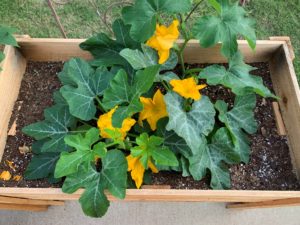
How to Plant Seeds
Acorn squash can be planted in both spring and mid summer, as long as you have 75 to 100 days before your first frost date. If you are not sure when your frost dates are, or whether you have enough time to plant seed, go to my resource page where you’ll find links for this information and more.
If you are planting in the spring, the seeds need temperatures of at least 60oF to germinate. You can start seed indoors three or four weeks before the last frost date. However, squash, like okra, are sensitive to root disturbance, so be careful when transplanting outdoors. Be sure to wait to direct sow or move transplants outdoors until the danger of frost has passed because seedlings prefer the warm soil and are sensitive to frost.
One reason to plant a summer crop is that you’ll be able to avoid the squash vine borer and other pests that are more common in the spring. (see Pests below).
Sow two to three seeds per container and water. You’ll need to keep the soil moist, but not soggy. Once the seedlings are at least a few inches tall and have a few sets of true leaves, you can determine which is the healthiest seedling. Remove the rest by cutting them off at soil level. Do not pull the unwanted seedlings, or you may inadvertently damage the root system of the one you prefer. (If you are going to grow the squash in a planter box like I did, you can grow two per box.)
When transplanting seedlings into containers, plant them closer to the trellis or other support structure and orient them so that they will grow in that direction.
Sun, Water, Fertilizer

Acorn squash require at least six and preferably eight hours of full sun. They will do well in temperatures between 70o F and 90o F. Established plants can still do well at higher temperatures provided they are well watered. Flower production, however, may decline in higher temperatures.
As with other container plants, you’ll need to make sure the acorn squash stay hydrated, which means you may have to water more than once a day during the warmer months. Check the soil about two to three inches below the surface. If it feels dry, you’ll need to water. Make an effort to water only the soil, and not the foliage, as this will lessen the chances of the plant getting fungal diseases from damp leaves.
Acorn squash is said to be a heavy feeder, so be sure to use a balanced fertilizer or a fertilizer that is slightly higher in phosphorus like this one. Use according to package instructions. Some recommend fertilizing after the seedling first appears and then again after the flowers appear as this will help with squash production.
Pollination
Like other cucurbits, acorn squash produce both male and female flowers that will require pollination in order to produce fruit. The male flowers grow on slender stems, while the female flowers have a miniature sized squash (ovary) located underneath the flower.
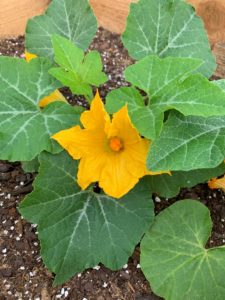
Pollen from the male flower is transferred via pollinators, such as bees, to the female flower. If pollinators are scarce in your area you may need to hand pollinate. Simply transfer the pollen from the male stamen to the female stigma via a cutip or small, soft bristled paintbrush or cosmetic brush. Both the stamen and the stigma are located in the center of the male and female flowers, respectively. Each male flower will have enough pollen to pollinate several female flowers. If the pollination process is successful, the ovary (acorn squash) will begin to develop into a mature fruit. If the pollination was inadequate, the ovary will soon wither and rot.
The best time to hand pollinate is in the morning after the flowers have opened. The blossoms will remain open only one day before dying. If your plant has not produced flowers you can read this article to diagnose the problem.
Varieties
Acorn squash are available in two different types of plants, vining and bush. Bush varieties are said to be easier to grow in containers because they tend to spread out less than the vining varieties. Bush varieties may still require support of some kind, but not to the extent that a vining type would.
Table King Bush is an heirloom variety that is compact and thus conducive to container gardening. Each plant produces about six squash that are a bit smaller in size. It is ready to harvest in 85 days.
Table Queen Bush, as its name suggests, is also a bush variety. It has dark green skin and orange flesh. It’s ready to harvest in about 80 days. Conversely, the Table King and Table Queen are vining heirloom varieties.
Table Gold is a bush variety that has bright gold skin and light orange flesh. It can be harvested as a summer squash when it’s younger and the skin is thin. It matures in about 95 days.
Cream of the Crop, also a bush variety, has creamy white skin and flesh. It matures in about 80 days.
If you want to learn more about how to distinguish between vining and bush varieties, check out this short article.
Pests
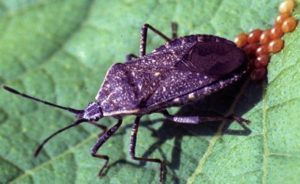
Squash Bugs are flat, brown to blackish bugs that are shaped like a shield with a triangle on the back. These prehistoric-looking insects suck the sap from the plant’s leaves, causing them to develop yellow spots that turn brown, then black and then crisp. At some point, the plant’s vines will wilt. You can learn more about this pest and how to get rid of them organically in this article.
Cucumber Beetles are small, bright yellow (or greenish-yellow) beetles with either black spots or black stripes. The adults eat the leaves, stem, and squash, while the larvae feed on the roots resulting in damage to the plant and possible wilt caused by bacteria carried by the bugs.
If you see a cucumber beetle on your squash plant, try placing your hand or a container of soapy water underneath the plant and then knocking the beetle off into your hand, or the container. You can learn more about cucumber beetles in this article.
Squash Vine Borer – the adults are moths that are about 1/2″ long with striking red and black markings. The females lay their small, oval, brown eggs at the base of the plant. When the larvae emerge, the grub-like caterpillars will bore into the plant stem, hence the name vine borer.

One way to tell if your squash has vine borers is if the plant has wilted leaves even after it’s been watered. In addition, you’ll see frass or insect excrement that looks like sawdust on and around the base of the stalk. Once the larvae bore into the plant stem, it is just a matter of time before the plant will die.
Some have successfully saved their plants in the early stages of a vine borer infestation by digging the larva out of the vine and completely covering the wound with soil. But this is not always possible. To learn more about how to prevent and organically treat this garden menace, click here.
Aphids are tiny, soft-bodied insects that hide on the underside of leaves. They suck the sap out of the plant, which prevents the plant from getting nutrients. As a result, the leaves will curl or appear misshapen, turn yellow and wilt.
Aphids leave a sticky honeydew substance on the plant, which attracts ants and can promote the growth of black mold. If left unchecked, aphids can multiply and form colonies that can lead to a full blown infestation. To learn how to get rid of aphids, check out this article.
Inspect your garden for pests as often as you are able, morning and early evening being the optimum time. This will allow you to spot a problem before it gets out of hand.
Diseases
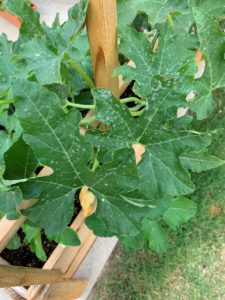
Powdery Mildew is a common disease that affects cucurbits, including acorn squash. It is characterized by powdery spots on the upper leaves that eventually spread to cover the leaves and then the entire plant. If left untreated, it can kill the plant. Learn more about prevention and treatment here.
Downy Mildew is a fungal-like disease that is caused by a parasite. It’s characterized by the yellowing on the upper side of leaves and gray spores on the underside causing the leaves to eventually dry up before falling off. There is no cure for this disease, but you can slow its progression and prevent its spread to other plants by removing any severely infected leaves. Also, neem oil, if applied early, can slow the disease and possibly halt its spread.
It’s best to prevent downy mildew instead of treating it. Prune leaves to improve circulation and avoid getting the leaves wet when you water. You can learn more about downy mildew in this article.
When to Harvest
Most acorn squash matures between 75 to 100 days, depending on the variety. Your seed packet should give you the number of days to maturity for your variety. As the time approaches begin to look for changes in the squash’s appearance. The skin will darken to a deep green and will lose its sheen. Also, it will start to harden to the point that you will not be able to put a dent in it with your fingernail. Moreover, a yellow spot on the underside of the squash where it comes in contact with the soil will turn orange. Another telltale sign is the stem will begin to harden and dry or even shrivel.
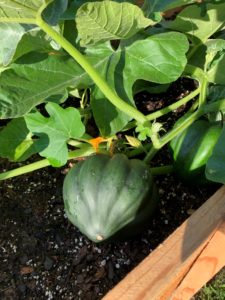
When the acorn squash meets these criteria, cut it from the vine, leaving an inch of stem on the squash. Do not harvest the squash early as it will not continue to ripen once it’s severed from the vine. Do not wait until the rind is primarily orange as this indicates an overripe squash. Harvest prior to the first true frost as this can damage the squash.
How to Preserve the Harvest
Unlike butternut squash that requires a curing period, acorn squash can be eaten right away. In fact, acorn squash will not store as long as other winter squashes, so you’ll need to eat it within the first two weeks of harvesting. Or it can be stored in a dark, ventilated room that is between 50oF and 60oF for two to three months. Be sure to store it in a single layer so it receives good airflow.
For those of us who live in warmer climates and don’t have basements, you can preserve your harvest by cooking the squash first and then storing the flesh in the freezer in an airtight container for about six months. Do not store uncooked acorn squash in the refrigerator or freezer, as this will cause it to spoil.
How to Enjoy Acorn Squash
This winter squash can be served as a side dish roasted, mashed and baked. It is also a great addition to stews and soups. Some like to toast the seeds in the oven like you would pumpkin seeds. Here is one of my favorite ways to prepare it for a hearty meal.
Acorn squash can be a wonderful addition to one’s garden and one’s table. Consider growing it, or one of the other winter squashes, like butternut, this summer or fall.
Note: If you found this article to be helpful, please share it with someone you think might be interested in it as well. Thank you!
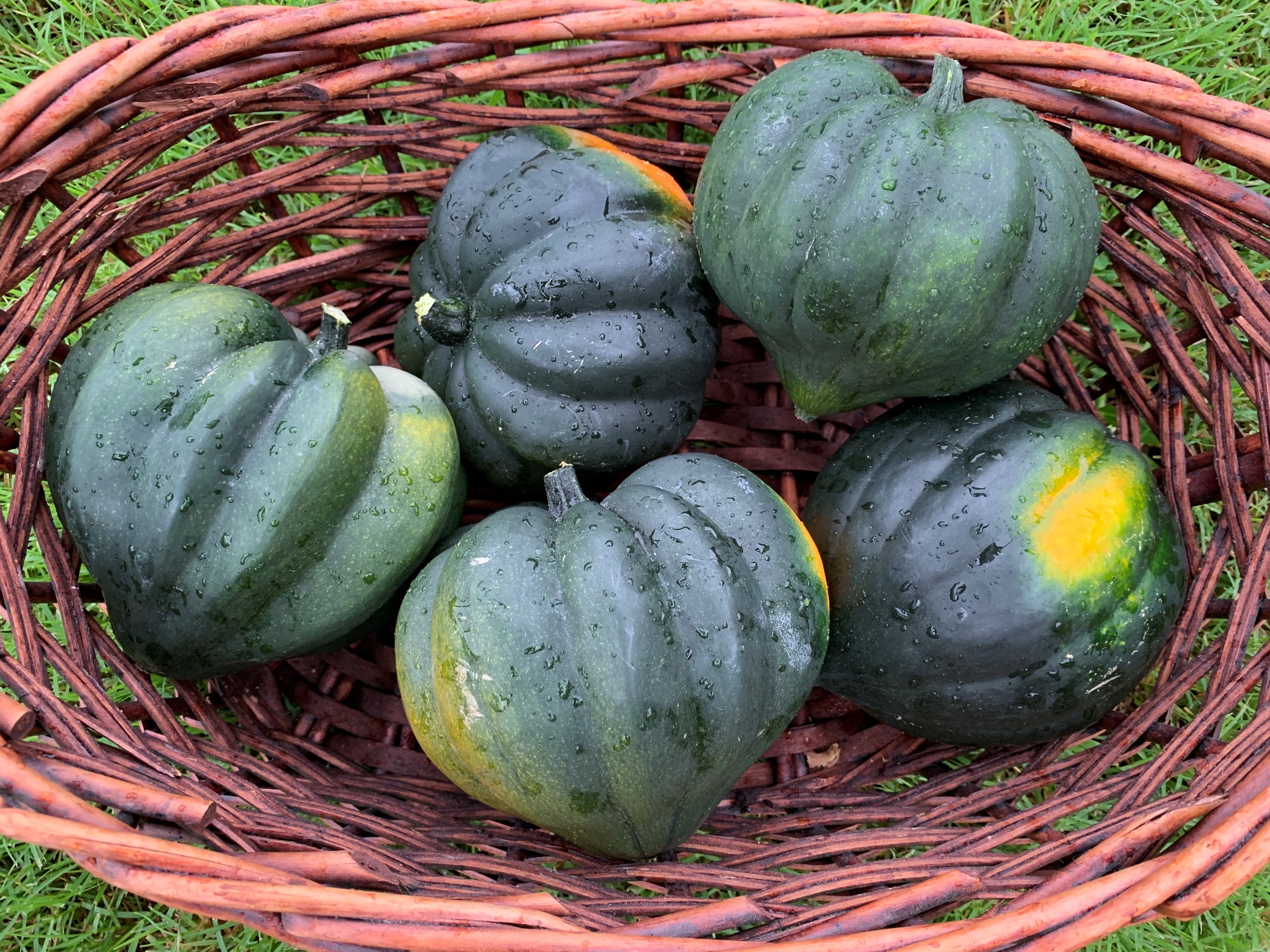
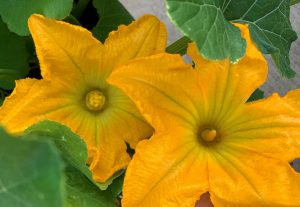
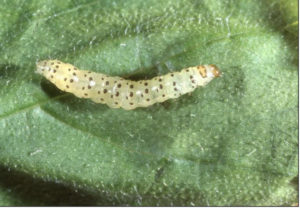

The growing season for acorn squash is March through November, although there is variation within this range. For example, people in Texas can start planting in March, while people in Missouri and NC don’t start planting until May.
Hi Iris,
Thanks for reading and commenting! You’re right, there is a wide range in the growing season for acorn squash and all other vegetable crops. It just depends on your first and last frost dates.
Happy Gardening!